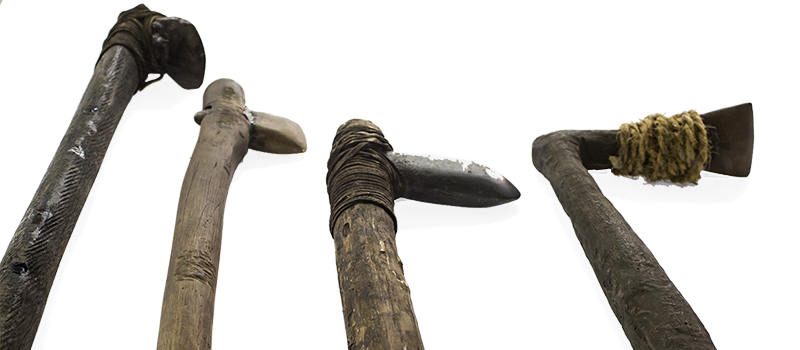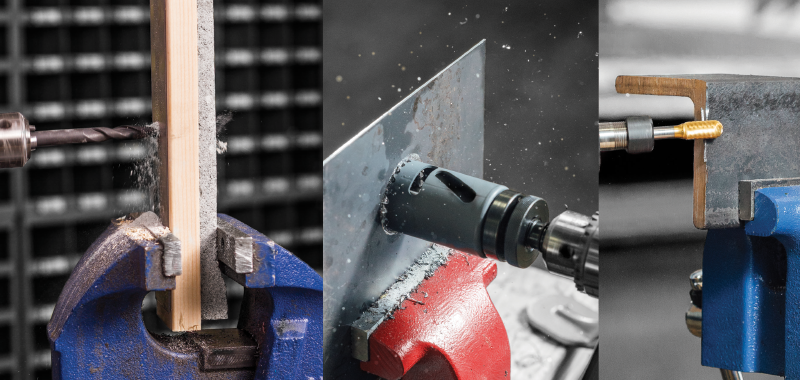One day, shortly after fire was harnessed and became a useful tool, a caveman decided trees were necessary to make more fire. After all, you can’t have fire without fuel. After trying to push the tree down, he picked up a stone and tried to knock the tree down with that. (Editor’s note: We’re just assuming here.)
Soon he tied the rock to a stick, giving himself leverage, and bashed the tree with that. The first cutting tool was born.
Perhaps before that, the same caveman tried to carve open a nut that fell from a tree and used a stone or stick that had a sharp edge. Either way, cutting tools date back a long way.

Kimball Midwest sells lots of them, but they don’t look like rocks.
It’s safe to say technological advances have aided in making cutting tools better generation by generation. But things really got humming with the Industrial Revolution in later half of the 18th century.
Goods that once took days to craft by hand started to be produced in mass quantities by machines in factories, thanks to the introduction of new machines and techniques in textiles, iron making and other industries.
While steel was being melted and shaped into iron beams, aided by steam power, tools also were being made. While it was good enough to create a mold and pour the iron ore in, the finish of the product still had to be accomplished.
Axes don’t simply come streamlined and sharp enough to cut into trees. The metal needs to be shaped and sharpened.
So perhaps it was not the swift manufacturing of the axe that was the important invention, but the tools that came after to simplify the finishing process of the product and make it supremely efficient.
But cutting down trees no longer was the goal. Now the issue, as buildings became taller than three stories, was steel. The focus, however, was not making steel and steel beams and other pieces easily; it was making everything else go just as easily. Prefabricating was on the horizon. But being able to cut holes into steel with relative ease was going to be an issue.
Alloy steels containing tungsten were developed soon after the Industrial Revolution was making hay, and they developed into molybdenum containing high-speed steels. All of this made steels harder and thus, tools to cut through them needed to be even harder than that.

Since then, companies have been perfecting ways to cut through steel, concrete, wood and any other surface as efficiently as possible. We offer a behind-the-scenes glimpse of how we make our Super Primalloy Drill Bits here.
While we are well past the Industrial Revolution, we are still finding ways to make harder, stronger steels and better ways to manufacture tools.
If you are looking for the most technologically advanced cutting tools, shop kimballmidwest.com or 

.png?width=131&height=58&name=image%20(40).png)
